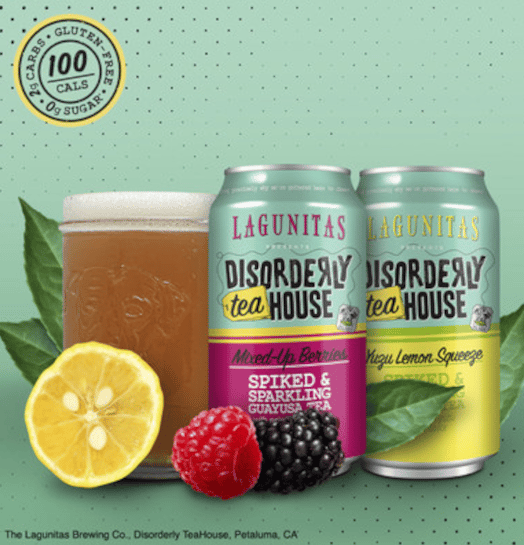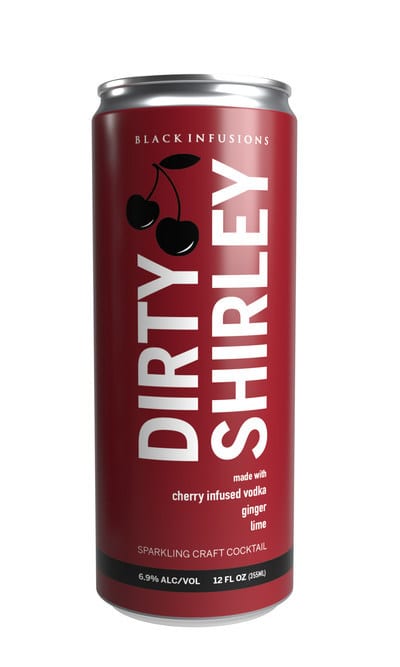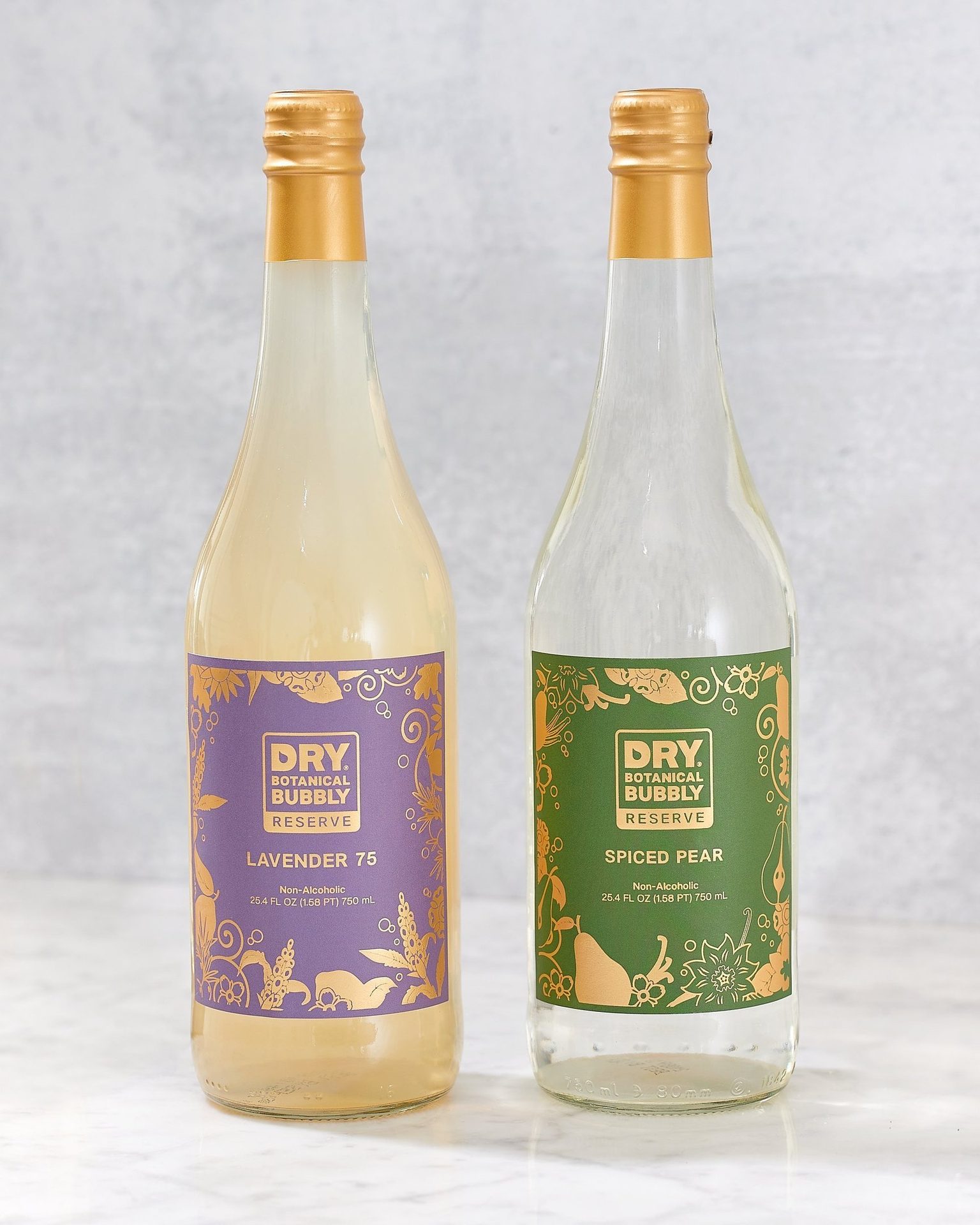Beverage
R&D
Delivering the best of both worlds
By Lauren Sabetta
Botanical flavor profiles help bridge gap between indulgence and functionality
(Photo by Nitin Sharma from Pexels/ courtesy of Canva)
American rapper, singer and record producer A$AP Rocky, when asked about his life growing up, said: “For me, growing up in Harlem and then migrating down to SoHo and the Lower East Side and chillin’ down there and making that my stomping ground. ... That was a big thing, because I'm from Harlem, and downtown is more artsy and also more open-minded. So I got the best of both worlds.” Within the beverage space, experts note that today’s consumers also are seeking out “the best of both worlds” as they desire functional beverages that no longer compromise on taste.
“The pandemic has greatly affected how consumers perceive their health and how they believe beverages can help keep them healthy,” says Shawn Gerstenkorn, director of marketing strategy, North America Beverages at Kerry Taste & Nutrition, Beloit, Wis.
Nevertheless, taste remains at the core of consumption desire and people now want sugar free, lower carb, plant-based, vegan and diet-specific foods to be tasty, Gerstenkorn explains.
“The pandemic has actually given people not just two weeks but two years, full of new patterns that they had to first form and then become a habit. Taste was always king but now the queen is functionality,” he says. “I think it’s that aspect that has significantly shifted. Product developers need to keep on top of these new trends in order to make sure their new beverages give consumers what they are looking for.
Utilizing guayusa tea leaves, Lagunitas Brewing Co. brews its tea in-house, then, natural fruit flavors are added to provide a crisp finish to Disorderly TeaHouse’s two available varieties: Yuzu Lemon Squeeze and Mixed-Up Berries. (Image courtesy of Lagunitas Brewing Co.)

“From our detailed Kerry research we know that there have been billions of dollars of product shifts that have happened right in the past two years alone,” he continues. “Because we look at data on a monthly basis, we know those shifts have occurred. It is important now to focus on what people want because their priorities have shifted in the past two years.”
Moreover, from a product development standpoint, experts note that health and wellness trends are making an impact when it comes to flavor profiles and what customers want.
As consumers are taking a proactive approach to holistic well-being, many are searching for flavors they link to products that may be formulated to support wellness, notes Jennifer Zhou, senior director of product marketing at Chicago-based ADM.
“For instance, citrus fruits are a source of vitamin C, which consumers may associate with products formulated for immune function support,” she explains. “Tropical and citrus flavor blends, such as passion fruit-lime or pineapple-yuzu, bring a fresh twist to energy drinks, juices and carbonated beverages. Many new beverage launches also feature these juicy, fruity flavors alongside botanical ingredients for mouthwatering flavor with ‘health halo’ perceptions.
“For example, a bottled green tea with yerba mate and lemon holds consumer appeal as a natural source of caffeine,” Zhou continues. “Turmeric is another popular botanical, as consumers may associate it with wellness attributes. Its peppery, earthy flavor is well-balanced in golden lattes and fruit blends. Research indicates botanicals have a positive image among consumers, with 66% perceiving botanicals as natural, 63% as ‘better-for-me,’ and 43% as both premium and tasty.”
Purposeful indulgence
Whereas indulgence was once considered the simple act of pleasure-seeking, in 2022 indulgence means that consumers now are looking for ways to indulge purposefully, experts note.
“Many consumers say it’s okay to enjoy indulgent treats as part of a healthy diet,” Kerry’s Gerstenkorn says. “Incorporating functional botanicals is a way to bridge the gap between indulgent and health-forward foods and beverages.”
“Taste was always king but now the queen is functionality. I think it's that aspect that has significantly shifted. Product developers need to keep on top of these new trends in order to make sure their new beverages give consumers what they are looking for.”
— Shawn Gerstenkorn, director of marketing strategy, North America Beverages at Kerry Taste & Nutrition
Moreover, as consumers seek out natural ingredients and flavors with perceived health benefits, botanical flavor innovation continues to emerge, notes Rebecca Shurhay, marketing analyst at Flavorchem, Downers Grove, Ill.
“According to Euromonitor, functional beverages are expected to be the fastest growing sub-group in the global beverage market as consumers are turning their attention to gut-friendly sodas, clean energy drinks, diet-supportive drink mixes and more,” Shurhay explains. “Botanical flavor combinations like raspberry-lime, cucumber-mint, and blueberry-lavender are great for springtime beverages and work well across categories.
“Fruits like peach, mango, lemon, grapefruit and blood orange are popular flavors that blend well with other fruits or botanicals to create a more unique pairing,” she continues.
Further, when indulgence is considered a form of self-care, floral flavors can bring spa-like decadence to beverages such as teas and seltzers, says Micah Greenhill, beverage marketing director at ADM.
“Some examples include elderflower blending with honey or mint, rose complementing berry notes and soothing lavender offsetting tart blueberry or rhubarb,” Greenhill says. “Additionally, premium juices and fruit smoothies with less sugar are fulfilling consumer desires for better-for-you beverages.
Black Infusions Dirty Shirley, the adult cocktail version of the nostalgic Shirley Temple, is made with dark cherry vodka, naturally infused with real cherries, ginger and lime, and is free from artificial sugar and ingredients, the company says. (Image courtesy of Black Infusions)

“These familiar beverage formats bring great taste and enjoyment to the table, and may also offer fiber and vitamins to support consumers’ overall well-being,” he continues. “Mixed berries, watermelon, peach and grape are frequently featured in fruity drinks such as cold-press juices, blended fruit and yogurt drinks, as well as hydration beverages.”
Meanwhile, nostalgic throwbacks are driving new beverage innovation in plant-based beverages, Shurhay says.
“Seventy-one percent of U.S. consumers enjoy things that remind them of their childhood as brands reinvent nostalgic flavors like cotton candy, lemonade, s’mores, pumpkin and apple that tap into consumer’s pre-existing emotional connections,” she explains. “The next big trend in seasonal food and drink will feature upscale twists on classic flavors like maple, peppermint and watermelon that offer consumers both familiarity and a novel eating experience.”
Beverage flavors that invoke a deep sense of indulgence also can combine a traditional favorite such as chocolate or caramel with a botanical, Kerry’s Gerstenkorn notes.
“For instance, the global favorite chocolate milkshake would gain added appeal with surprise flavors such as lavender,” he says. “Notably, basil, a well-known savory flavor, is fast developing a role as a new taste in beverages, where one innovative developer created a basil and lime soda pop.”
Cocktails, mocktails offer unique flavor pairings
As cocktails represent classic indulgence, offering feelings of celebration or relaxation, flavors from these drinks are moving into the alcohol-free space, ADM’s Greenhill notes.
“Champagne, paloma and mojito tantalize consumers’ taste buds with familiar notes in unexpected places like sports drinks,” he says. “Boxed tea concentrates are also tapping this trend, providing a base for cocktails and mocktails with flavors like ginger-lime Moscow mule and berry-hibiscus Margarita.”
Sue Quach, beverage lead at Synergy Flavors, Wauconda, Ill., adds that, with the rise of sober-curious consumers, new and innovative drink offerings in the low- and no-alcohol category include botanical blends and creative mocktail formats.
“Heineken’s Desperados Virgin 0.0% is its first alcohol-free product created from a ‘unique recipe of citrus and zest of lemon.’ Lilo launched a lower ABV hard seltzer in the UK that uses sparkling Scottish water and distilled botanical spirits,” Quach notes. “Truly has a new line of lower ABV Margarita-inspired flavored hard seltzers, including Mango Chili, Watermelon Cucumber and Strawberry Hibiscus.”
DRY Soda Co., in fall 2021, released a new elevated sparkling beverage: Botanical Bubbly Reserve. Available in the flavors Lavender 75 and Spiced Pear, Botanical Bubbly Reserve delivers a Champagne-like sophistication and finish, the company says. (Image courtesy of DRY Soda Co.)

Alongside the popular mocktail concept, the actual alcoholic beverage in the ready-to-drink (RTD) cocktail category also is growing, says Colleen Roberts, director at Flavor Dynamics Inc., South Plainfield, N.J.
“An improvement on the ‘wine cooler’ concepts of the past, new complete mixed drinks in a can are more popular when they can nail that ‘made in the bar’ vibe,” she says. “Flavors like mojito, Moscow mule, Margarita and Bellini enhance the mixed drink concept.”
Meanwhile, as many consumers have an adventurous side, “there’s something to be said for the classic flavors like lemon, citrus and cherry,” Synergy Flavor’s Quach notes.
“For example, hard seltzer is a saturated market but there are always new brands coming out and they usually debut with black cherry, citrus and lemon,” she explains. “Consumers want to try new flavors and brands recognize that, so they might debut a black cherry pomegranate flavor after their signature line.
“If you look at top selling products, the flavors they debut first are always mainstream and then they launch a limited-time offer that combines a trending flavor with a mainstream one,” Quach continues. “In the summer, we can expect to see mango and pineapple with an exotic flavor twist like star fruit perhaps. Pairing familiar favorites with something unknown allows consumers to play it safe and explore the unknown.”
Emerging flavor combinations
As traditional flavors will always have a place in beverage offerings, familiar flavor combinations are being reimagined in new beverage formats, experts note.
“We’re also seeing opportunities for more exotic flavor profiles,” ADM’s Zhou says. “Consumers are thirsting for new experiences and excitement, fueling a rise in global flavor profiles across applications.
“Examples include an energy drink with tasty tamarind or a flavored water featuring prickly pear. More well-known regional flavors are being elevated in exciting combinations, like tropical cherry apricot and lychee coconut,” Zhou continues. “Plus, the addition of heat and spice from cinnamon, cardamom and ginger can punch up pairings with blackcurrant, strawberry, mandarin and apple. These ‘familiar with a twist’ flavors provide a broad scope to engage with consumers.”
Although global flavors are not new, internationally influenced food and drink will further drive beverage innovations “as consumers seek out culinary exploration and transportive flavors,” Flavorchem’s Shuray says.
“Consumers are embracing adventure with ethnic flavors from Asia, Central America, and the Middle East trending upwards,” she explains. “Dragonfruit, horchata, mandarin, and pomelo are some of the fastest growing flavors from 2021 and are poised for continued success in the beverage category.”
Kerry’s Gerstenkorn notes that botanicals such as sage, rosemary, lavender and citrus blossoms are set to be very popular in combination with classic flavors.
“Flavors, botanicals and extracts that not only refresh and refuel, but create craveable experiences, with dessert-inspired, fruity and nostalgic flavors can drive appeal,” he says.
With more people now thinking about making better choices, this means that healthier options and beverages are going to get more attention from consumers going forward, he adds.
“So, it’s lifestyle-specific products focused on delivering health and functional benefit products,” Gerstenkorn says. “It’s not as much only about taste anymore, as the pandemic has forced the public to consider how their foods and beverages can deliver some added healthy component to their daily diets.” BI
